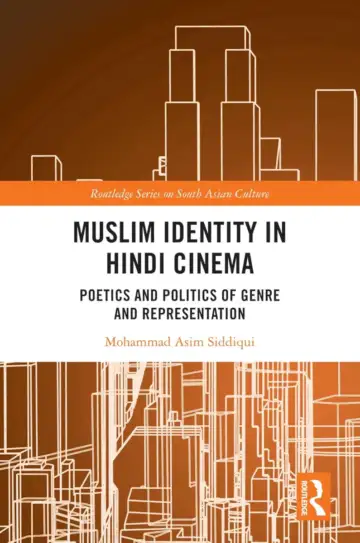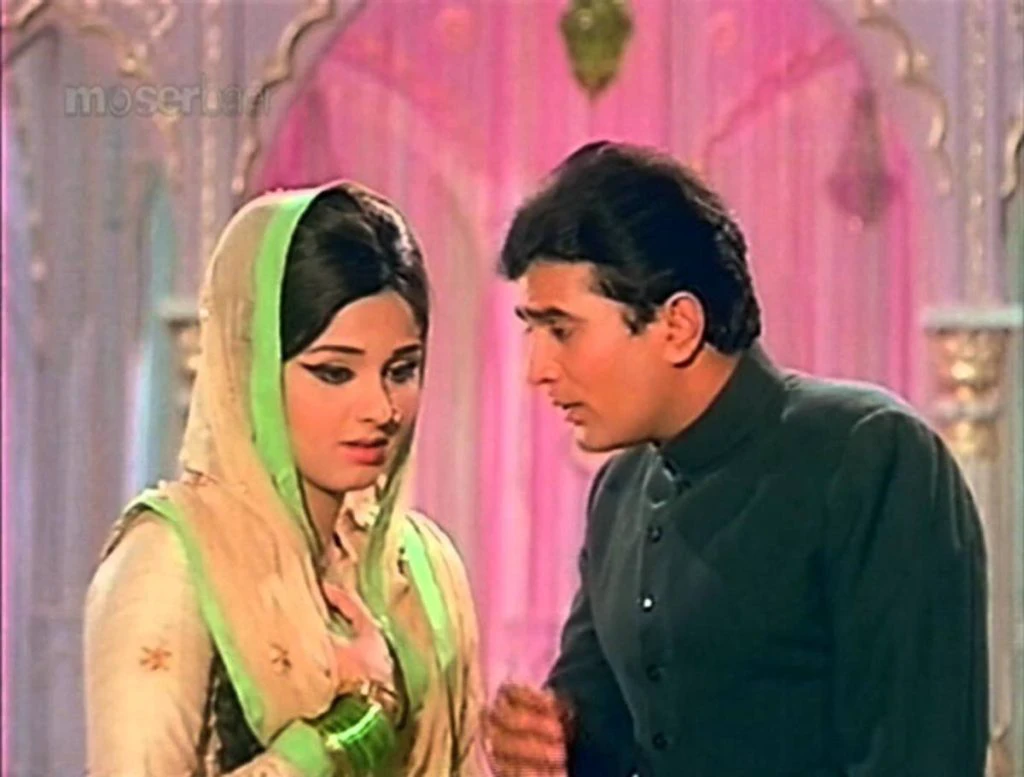Mohammad Asim Siddiqui must be lauded for writing Muslim Identity in Hindi Cinema: Poetics and Politics of Genre and Representation – an excellent, passionately argued monograph on a tricky subject.
Though the subject has been handled in articles and book chapters, a full-length study requires some courage and a strong ethical stand to be attempted in our time.
The book is about how Hindi films have questioned but also contributed to various stereotypical notions of Muslim identity, as seen in films exploring the subjects of terrorism and Muslim women. It takes cognisance of this, no doubt. But the emphasis is less on the interrogations posed by the films and more on the stereotypes they present. The author offers examples and arguments to buttress his larger argument about lopsided and prejudiced, stereotypical representation of the Muslim identity. He substantiates these arguments with the help of numerous examples that are irrefutable most of the time; but the entire exercise might be somewhat disconcerting to readers like me, who grew up reading about how the industry-wallahs have conducted themselves in real life.
 Mohammad Asim Siddiqui
Mohammad Asim Siddiqui
Muslim Identity in Hindi Cinema: Poetics and Politics of Genre and Representation
Routledge, 2025
It is common knowledge how, soon after Partition, major writers, producers, actors, musicians and singers across communal and linguistic divides moved from Lahore and other parts of pre-Partition Western India to Bombay (now Mumbai) and made what the industry is today. Along with interfaith marriages, real-life romances and friendships among film personalities, the industry always showcased and practised secularism, nationalism and family values. Many Muslim actors adopted Hindu names, no doubt, to ensure greater acceptability among the large Hindu population – such as Dilip Kumar and Meena Kumari. But many others persisted with their Muslim names. Waheeda Rehman, background artists like Mohammad Rafi, Suraiya, Mehboob Khan, K.A. Abbas and Naushad, to name just a few, retained their Muslim names. Duets by background singers like Mohammad Rafi and Lata Mangeshkar emoted Hindu/Muslim songs picturised on Hindu/Muslim characters enacted by the likes of Dilip Kumar, Pradeep Kumar and Meena Kumari.
Given that a large number of Muslim personalities persisted with their original names, it is hard to accept Ravi Vasudevan’s argument that this forum alone was responsible for the change in names. It may have been caused by the desire for acceptability among the large Hindu majority who constituted the dominant consumers of Hindi cinema. Nonetheless, the inflammatory rhetoric of the All India League of Censorship must have hovered in the consciousness of film personalities. As Vasudevan reminds us, the League aimed at cleansing the film industry of all its non-Hindu elements. Its aim was not only about the representation of “Hindu thought”, but also about how this representation could be controlled.
While Vasudevan and Vijay Mishra have argued from their respective points of view, and their arguments overlap, Siddiqui chooses to offer his own narrative, without referencing them. Mishra identifies 1977 (Amar Akbar Anthony and the end of three decades of “Congress hegemony”) as a key moment of departure from the earlier representations of Muslims in Hindi cinema Siddiqui identifies a few other landmark years and moments: 1947 (Partition violence), 1971 (war with Pakistan), 1992 (demolition of Babri Masjid and the communal riots that followed), 2001 (9/11), and 2002 (Godhra).
In this context – and this may sound pedantic – when we talk of the representation of Muslim identity in Indian cinema, it may not be a bad idea to shift the perspective occasionally to their representation in the era of print too. My acquaintance with such representation tells me that an element of hostility predated its advent in films, from the time of Bankim’s Anandamath. It was only during the short span of the Progressive Movement that an attempt was made to transcend communal prejudice. For example, in a leading Odia periodical called Nababharat, we come across essays like “Islamra Mahatwa” or The Greatness of Islam in 1936, in which the author extols the virtue of the religion. This gesture on the part of a Hindu, and in the backdrop of numerous communal conflicts happening then, was commendable. It amazes us no end to encounter how very similar print discourses continue to haunt us even a century later, perhaps with greater vehemence. Of course, now it seems as though there has been an increased tendency to otherise Muslims in India through majoritarian discourses and political rhetoric since 2014. As Naushad so poignantly puts it:“Insaniyat bhi apna chola badal rahi hai. Ek aag dhimi dhimi hai. Dil me jal rahi hai (Humanity has changed its colours. The fires have dimmed but they still smoulder in the hearts).”
Siddiqui makes it clear right at the beginning that his study avoids going back to the Nehruvian era of Hindi cinema. He is more concerned with the post-1990s scenario. He assesses the changing perceptions of Muslim identity, starting from the historical films of the 1940s to more recent films which often address the current stereotypical notions of Muslim identity in the post-9/11 world and, in particular, analyses films which treat the problematic of “global Muslim identity”. It argues that genre, language and various sign systems create understandings and mediate notions of identity. Offering a close reading of films belonging to different genres – Muslim social, action thriller, gangster, biopic, and many others – the book interrogates concepts of social diversity, tokenism, marginality, and their reflection and consolidation in Hindi films. Though Siddiqui identifies many moments and representations in the book either in terms of the tokenism of Muslim representation or gross misrepresentation, it does not erase my nostalgia for those golden decades of Hindi cinema.
Of all the chapters, I find the chapter ‘Courting Terror, Constructing the Terrorist’ the most impressive and gripping. I enjoyed the chapter on ‘Shades of Diversity’ too, especially its refreshingly new reading of Sholay. I cannot resist the temptation of citing a few excerpts from the relevant chapter. Siddiqui says, “Sholay shows a world of admirable communal harmony and shared values. Muslims difference from other villagers is not only accepted but also appreciated in the film.… When Imam Sahib’s son Ahmad Mian is killed by Gabbar Singh, the young man represents the son of the village, whose Muslim identity becomes secondary to his identity of a young villager, loved by everyone…”
Imam Sahib refuses to submit to the diktat of Gabbar. “Deriving his courage from his strong belief in Islam, his resolve suggests that moral courage is much more important than physical courage. … Peoples’ love and respect for Imam Sahib is suggested remarkably in one particular scene. In response to the sound of azan from the mosque when Imam Saheb asks for support to walk him to the mosque, almost everybody present in the crowd scene has a spontaneous gesture of coming forward to escort him.”
Even so, the general impression that the book left me with is that it is about the pervasive misrepresentation of Muslims in India in Hindi films, especially since the 1990s. As one of the endorsements aptly puts it, “the book takes you on an uneasy path of belonging to the minority when an unnatural conflict with the majority is gaining momentum.” My own sense of unease stems from a different reason. I have grown up believing the Hindi film industry to be a melting pot of India’s famed but bewildering diversity with its linguistic, cultural, ethnic, communal and caste divides. One does hear complaints of stereotyping each of these off and on. But the representation of volatile communal issues is the most problematic aspect of filmmaking in any genre, as one finds out from Siddiqui’s book.
Armed with a censor board that guarded breaches of communal harmony, filmmakers ensured they did not highlight simmering communal tension but chose to make films in the 1990s that offered less simplistic representations of Muslim identity – by stalwart filmmakers like Mani Ratnam and Mahesh Bhatt. The contradiction that strikes us about the growth of fundamentalism on the one hand and the refusal of major actors to adopt Hindu names, on the other, is an area that cries out for discussion.
A second issue that is under discussed is the presence of numerous star producers, directors and scriptwriters – Muslims themselves – Mehboob Khan, Salim Khan, Javed Akhtar, Kader Khan, Muzaffar Ali, to name just a few, who have dominated the industry. We are not told what prevented these filmmakers, influential directors and scriptwriters from offering genuine representations of Muslim identity or Muslim culture authentically. Siddiqui also cites many films in which Hindu producers and directors, from H.S. Rawail (Mehboob Ki Mehendi) to Siddharth Anand (Pathaan), have done it even in the heyday of right-wing dominance.
Is the book’s imagined reader then one from the Muslim minority? In that case, is a reader belonging to the Hindu majority expected to read it differently? Of course, the author tries his best to make us see his narrative differently. Overall, the book is a very important intervention on the subject, and a must read for film buffs and serious academics alike.
Sumanyu Satpathy, former Professor and Chair, Department of English, University of Delhi, is an independent scholar.
